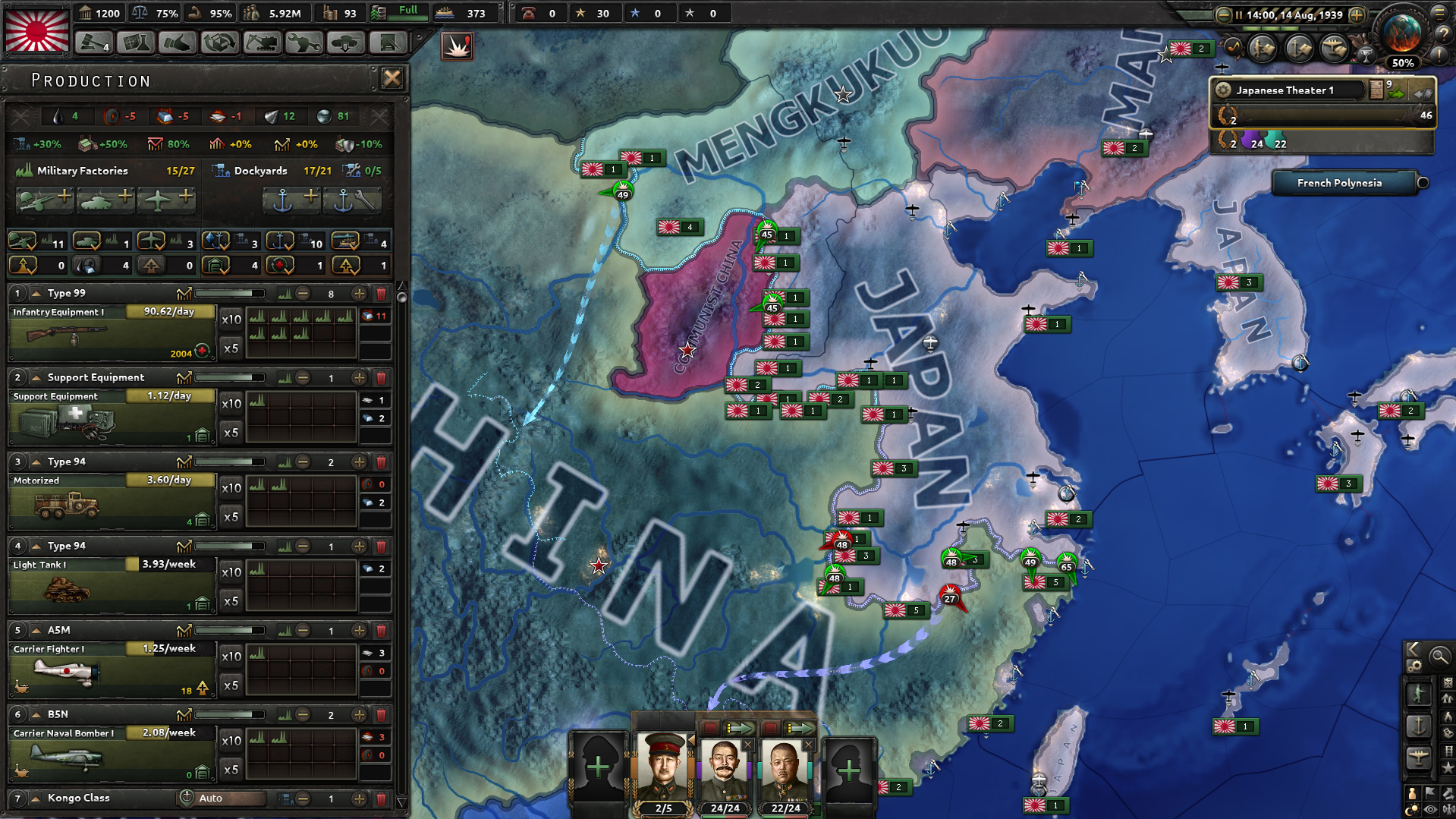

If a different ideology becomes too popular in a country, a referendum may be held that will peacefully convert the nation to the most popular ideology. Each of the four ideologies has advantages and disadvantages for example, fascist nations can go to war with other countries easily, but other nations are not as willing to trade with them as they are with democratic countries. Countries in the game may be democratic, fascist, communist, or non-aligned. For example, the player may justify war against other nations, spread their ideology abroad, or stage a coup. Some more clandestine diplomatic actions are also available. Faction members may assist each other in wars, making faction members precious assets.

Factions represent the main alliances of the era, like the Axis and Allies (for gameplay purposes, real-world factions like the Axis and Allies are split into numerous smaller factions, like the Comintern, the Chinese United Front, and the Co-Prosperity Sphere). Another key feature of diplomacy is the ability to create a faction or invite other nations to an existing one. Nations may undertake a variety of diplomatic actions they may sign non-aggression pacts, guarantee the independence of other nations, and offer or request military access, amongst other things. Hearts of Iron IV also attempts to recreate the complex diplomatic relationships of the day.

Late in the game, nations may develop nuclear bombs if they have the proper technology, which can be used to devastate enemy provinces and states. Resistance to occupation within a state can hamper the occupying power's control over it. Occupying key provinces within a state allows the occupying power to access the enemy's factories and natural resources in that state. Some provinces may have victory points, which can push a nation closer towards capitulation if occupied. If a division (or a group of divisions) successfully overwhelms an enemy province, they may occupy it. Technologies can be researched to improve equipment and learn new military doctrines, among other things, which often means that a more technologically advanced nation will have an edge in combat. How well divisions perform in combat depends on various factors, such as the quality of their equipment, the weather, the type of terrain, the skill and traits of the general commanding the divisions, and the morale of both sides. Divisions are placed in provinces and can attack enemy units in adjacent provinces. These provinces each have a type of terrain assigned to them that determines how well different types of units will perform in combat there. The major seas and oceans (for warships) and the sky (for warplanes) are similarly divided into different regions. Each state has a certain amount of building slots, factory slots, and 5 infrastructure slots. Land in Hearts of Iron IV is divided into tiny regions known as provinces (also called tiles), which are grouped together to form states. In addition to mobilization, there are other policies, including the nation's stance on conscription and commerce. Mobilization is represented as a "policy" that the player may adjust with the proper amount of political power, an abstract "resource" that is also used to appoint new ministers and change other facets of the nation's government. Most nations are initially forced to devote a significant number of their civilian factories to producing consumer goods, but as the nation becomes increasingly mobilized, more factories will be freed up for other purposes. These military factories and dockyards are, in turn, constructed by civilian factories, which also construct a variety of other buildings, produce consumer goods for the civilian population, and oversee commerce with other nations. Equipment is produced by military factories, while ships are built by dockyards. The navy and air force also require men and equipment, including the actual warships and warplanes that are used in combat. These divisions require equipment and manpower to fight properly. For the ground forces, the player may train, customize, and command divisions consisting of various types of infantry, tanks, and other units. A nation's military is divided between naval forces, aerial forces, and ground forces. The player may play as any nation in the world in the 1936 or 1939 start dates in singleplayer or multiplayer, although the game is not designed to go beyond 1950. No.Hearts of Iron IV is a grand strategy wargame that primarily revolves around World War II. If you want a new game key just click on the “ Get It Free” button and follow the simple instructions.
#Hearts of iron iv. free
List of legit free Steam keys for our users.


 0 kommentar(er)
0 kommentar(er)
